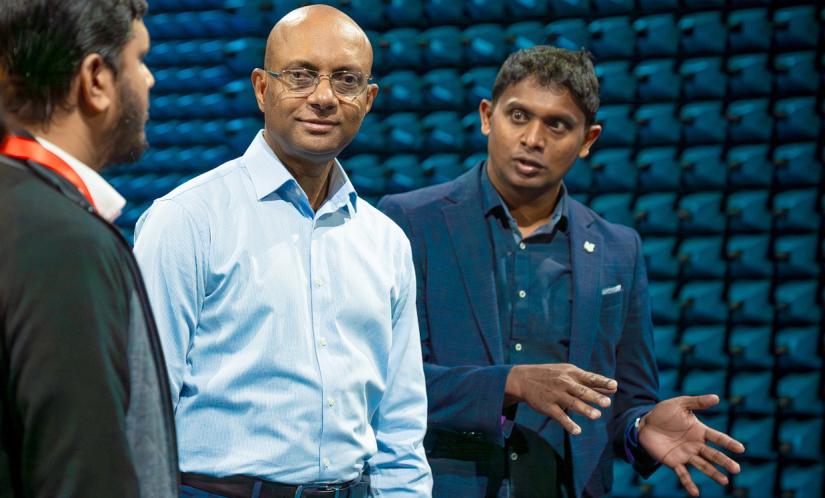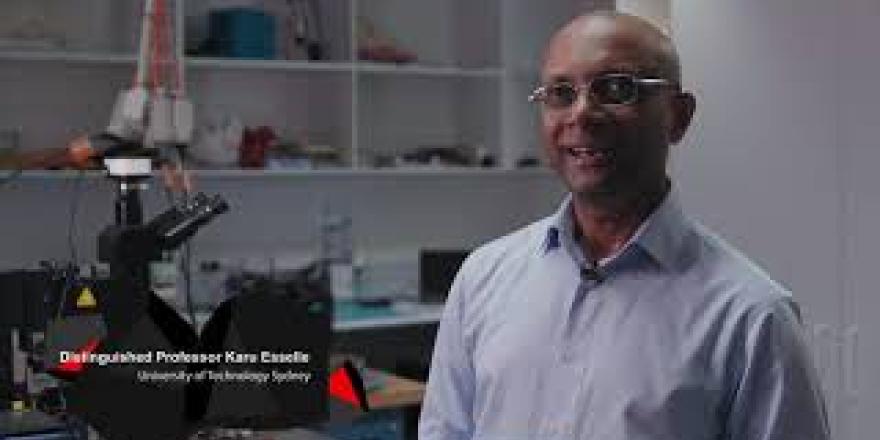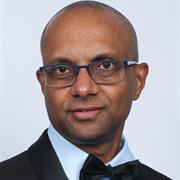UTS Distinguished Professor Karu Esselle and his team of researchers have pioneered a new technology designed to make satellite communication more efficient, secure and precise.
“The antenna systems we use to communicate are currently limited by how much power they consume and how much data they can transmit," says Professor Esselle.
"We have developed new technology that has resulted in antenna systems which are thin but can transmit a wide bandwidth of data and can be steered in a range of directions."
“This new method has produced unprecedented performance and will change the way information is transmitted.”
This game-changing technology also can provide significant advantages in developing technologies for protection of defence platforms.
Over the past five years, Professor Esselle and his team have partnered with Dr Manik Attygalle and his group at the Australian Defence Science and Technology Group (DSTG) to progress this technology into defence capability.
Although much of what is being developed is confidential, the technology has the potential to transform some military operations.
How does it work?
By applying their own scientific method called near-field phase transformation, Professor Esselle and his team have developed metasurfaces - ultra-thin disks that can mimic the functionality of thicker materials such as prisms.
“This is an entirely new, versatile and simpler method that can improve the way we communicate with satellites by steering a wideband beam,” says Professor Esselle.
“Antennas with ‘pencil-thin’ narrow steering beams offer significant tactical advantages compared with wide-beam antennas because they use considerably less power to transmit signals, and cannot be detected by adversaries.
"Minimising power consumption and covert operation are critical in most defence operations.”
The beam of any device that has a fixed antenna system can be steered by metasurfaces to improve its performance.
The amount of data that can be transmitted using narrowband antenna systems are limited. Wideband metasurfaces can be used to overcome limited bandwidth, enabling more data to be sent during a transmission in a pencil beam that can be steered in a wide range of directions.
Our future orbit
Apart for its military potential, these antenna systems can be commercialised in many ways. The possibilities are endless believes Professor Esselle.
“Specifically in Australia, better satellite technology would enable us to provide improved internet services to rural Australia," he says.
"Internet connectivity is a big problem here and many parts of the country simply do not have a good broadband connection. This tech could change all that.”
Satellites play an increasingly important role in our world. Making communication faster and more secure is a top priority. Most of the new generation of satellites are low earth orbit (LEO) satellites.
“These satellites orbit closer to the earth and are not stationary. They require user terminals with steerable narrow beams to track the motion of satellites,” Professor Esselle says.
Such user terminals are one of the potential applications of his ground-breaking antenna technology.
“With LEO satellites we will be able to improve communication with people on land, sea, and sky. This technology may even enable satellites to communicate with each other, as well as connecting to remote parts of the world.”
Although this technology is still in development, it's clear Professor Esselle and his team are at the forefront for revolutionising satellites and other defence systems across the world.
The MetaSteerers technology team was awarded the 2023 Australian Museum Eureka Prize for Outstanding Science in Safeguarding Australia.
Research team
-
Distinguished Professor in Electromagnetic and Antenna Engineering, UTS
-
Senior Lecturer, School of Electrical Engineering, UTS
-
 Dr Manik AttygalleS&T Discipline Lead, Defence Science and Technology Group
Dr Manik AttygalleS&T Discipline Lead, Defence Science and Technology Group -
Daniel BorgDefence Science and Technology Group
-
Curtin University
-
UTS
-
Dr Abu SayemUTS
-
Dr Affan BabaUTS
-
Ms Maira NabeelUTS
-
Dr Nishat KoliUTS
-
Dr Raheel HashmiMacquarie University










